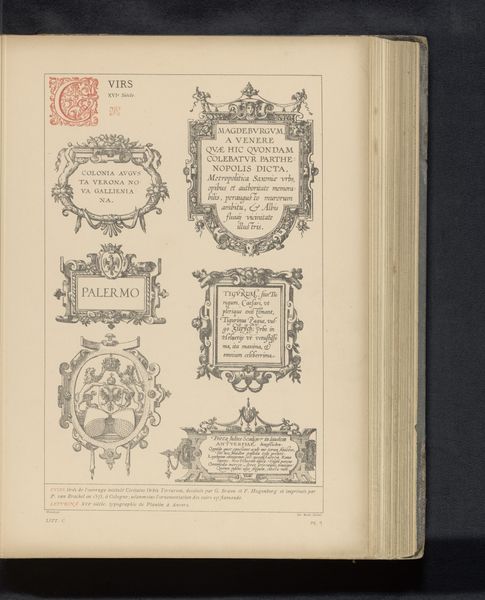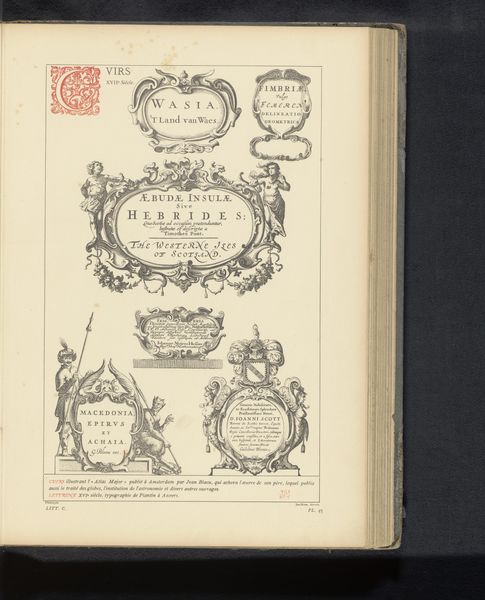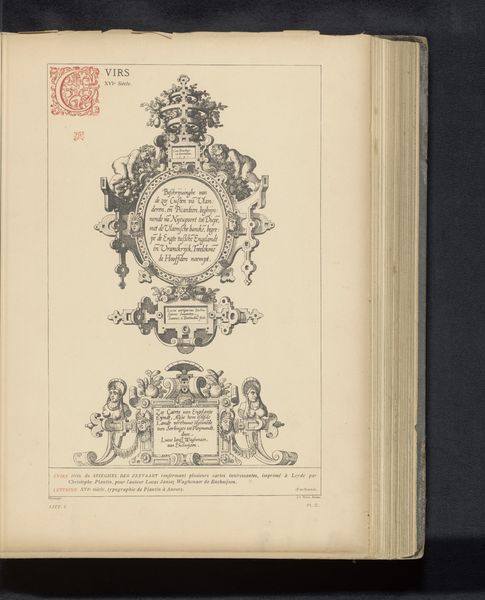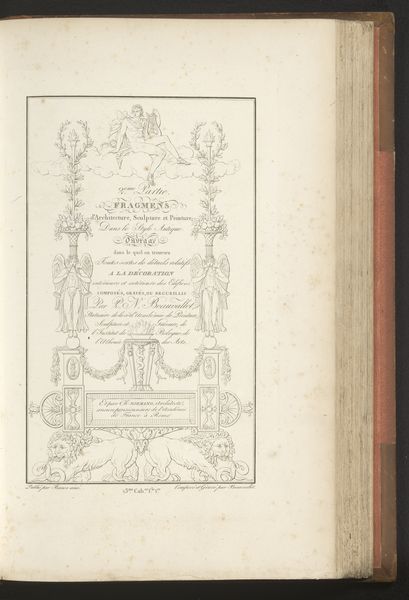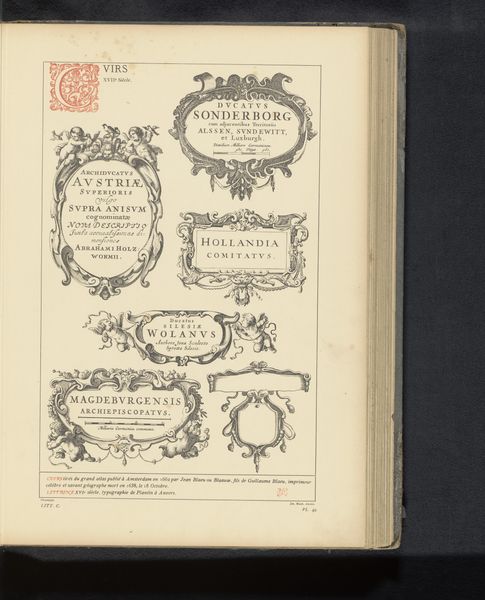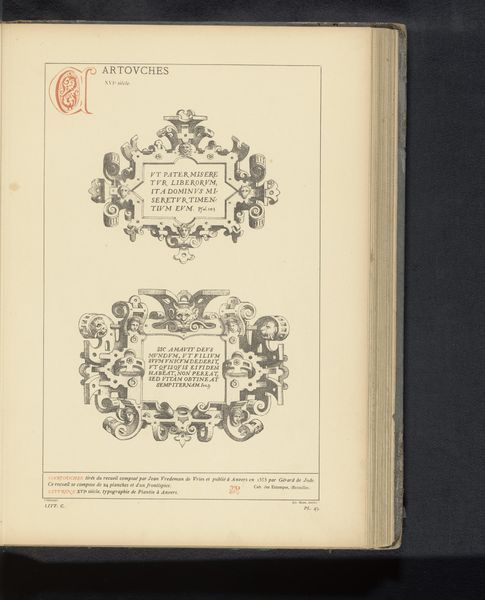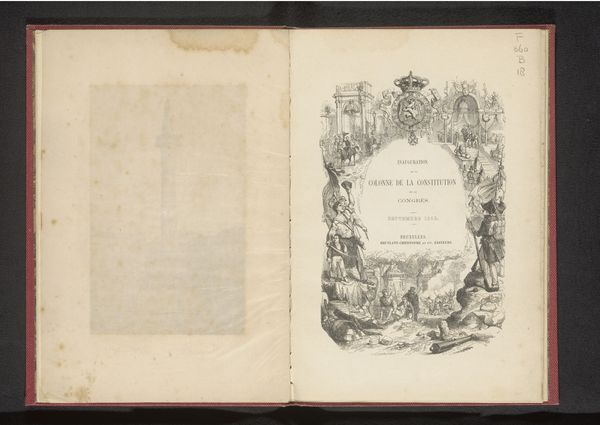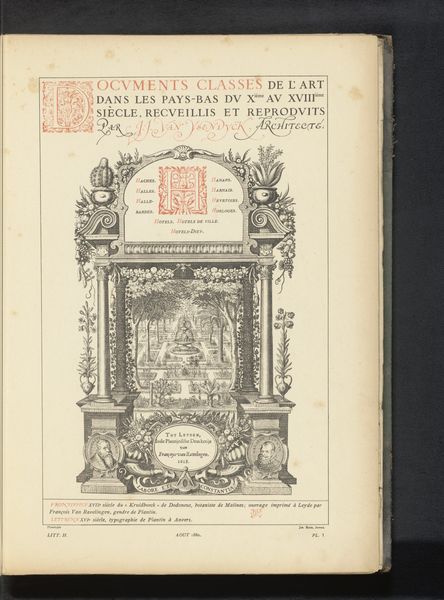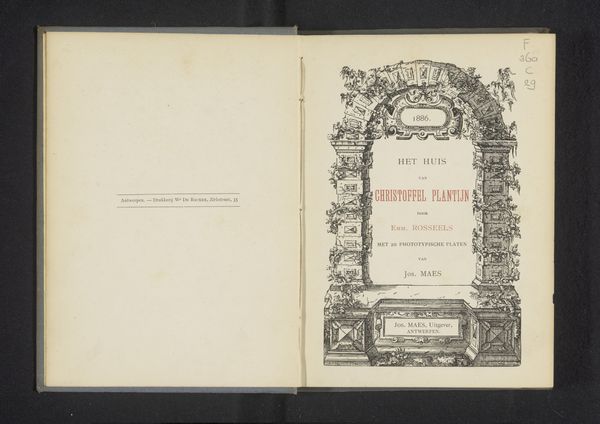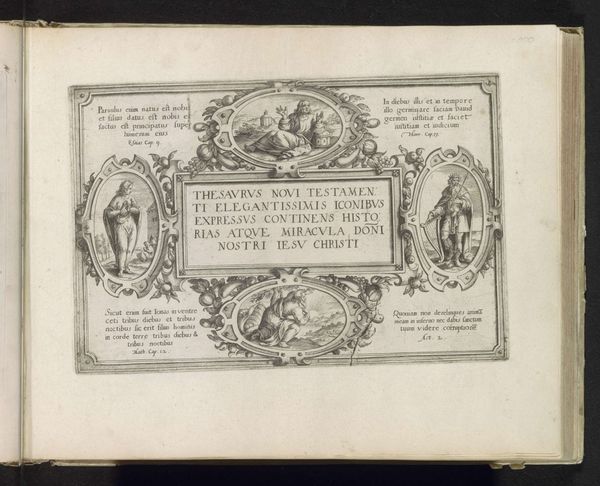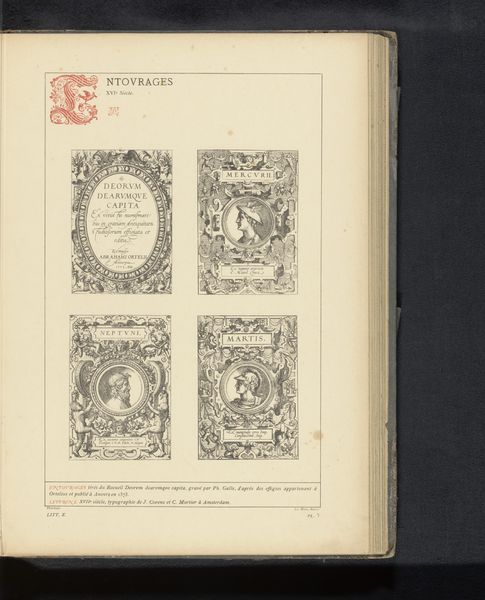
graphic-art, ornament, print, engraving
#
graphic-art
#
ornament
# print
#
form
#
line
#
history-painting
#
northern-renaissance
#
engraving
Dimensions: height 340 mm, width 229 mm
Copyright: Rijks Museum: Open Domain
Curator: Here we have a reproduction of a design featuring five ornaments by Frans Hogenberg, dating back to before 1880. It’s rendered through engraving, typical for printmaking of the time. What strikes you first about it? Editor: It’s busy! A fascinating jumble of frames and words. The eye bounces around trying to find a resting place. I see different styles, a sort of... organized chaos. Curator: The chaos speaks to the print’s function. As graphic art, and more specifically an ornament, its design could be appropriated for all sorts of productions. The historical context here reveals an interesting aspect about art's purpose during the Northern Renaissance: practicality! Hogenberg probably wasn't just making pretty pictures; he was producing designs intended to be consumed by a commercialized craft. Editor: Yes, I agree with the emphasis on accessibility and reuse. However, the balance and symmetry also draw the viewer to the detailed center. Semiotics may come into play with these human figures—garlands, suggestive of idealized representations of the body. Look closely at that lower ornament—the gestures, and what about that triangle-like shape? How would those particular geometries have created specific readings within 16th century viewers and buyers? Curator: The choice of imagery, the cherubic figures… likely signals the importance placed on lineage. The labor put into an ornamental print, which reproduces these markers of elitism for profit, is a testament to the social ambitions of this design as something available for consumption. The copy’s status as part of a reproducible and affordable design—rather than a handmade original—democratized access to artistry. Editor: An astute point! So the production method in itself shifts the piece's meaning and places the work somewhere along an evolving socioeconomic terrain, reflecting not only its era’s aesthetic principles but also complex dynamics of power and material. Curator: Precisely! Considering its life within a very involved socio-political matrix allows us to decode its enduring value beyond mere formal assessment. Editor: I still find my eye lingering on those geometric relationships... but I appreciate your emphasis on its context as reproducible and consumable.
Comments
No comments
Be the first to comment and join the conversation on the ultimate creative platform.
